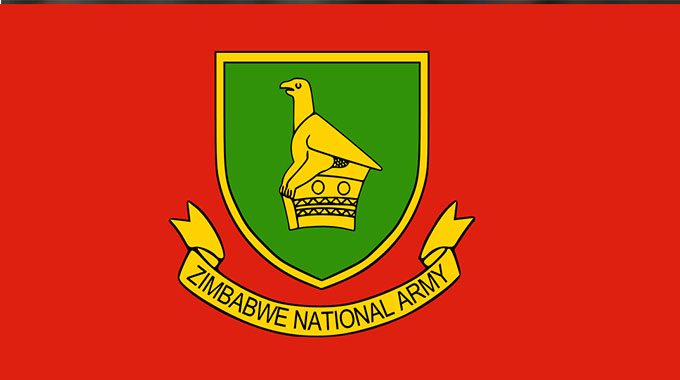Bulawayo street names: Immortalisng our icons and guarding our identity

Andile Tshuma, Chronicle Reporter
A brief street survey in Bulawayo made some interesting revelations on how much young people know about the history of the city and of the country as a whole. As a way of marking the Heroes and Defence Forces’ holiday, the Chronicle set out to have conversations with some Bulawayo youths and the theme was something that is always there for all to see. A number of youngsters were quizzed about the individuals after which the city’s streets were named.
Many people who grew up in Bulawayo were made to memorise the city’s central business districts streets from east to west and the avenues from north to south. Many people have no problem singing the street names in chronological order, from Samuel Parireyatwa Street, former Barrow street, to Josiah Tongogara, Robert Mugabe Way, George Silundika, Fife Street, Jason Moyo, Joshua Mqabuko Street, Fort Street, Herbert Chitepo, and Lobengula Street. The avenues, from Masotsha Ndlovu, Leopold Takawira right up to 15th Avenue. It seems that most young people have their compass right. However, it was saddening to note that the icons behind the street names are virtually unknown to most young people.Most youths were quick to point out that they knew who Joshua Mqabuko Nkomo was and who Robert Mugabe is. However, the rest of the answers were mostly guess work. Primary school going kids, surprisingly, knew better. They knew that the city’s streets were named after some of the country’s patriots, across different disciplines mostly involved in the liberation war that brought the country’s Independence in 1980.
Some Grade Six pupils from Coghlan Primary School knew about Masotsha Ndlovu and Benjamin Burombo from social studies. They know Samuel Parirenyatwa but confused him with David Parirenyatwa until a witty one pointed out that the former was father to the latter.
High school pupils did not seem to be bothered about the people behind the street names. And most responses showed that they thought all of were former government officials. Someone said Herbert Chitepo was a former mayor. It is so sad that young people know so little about people whose names are mentioned probably on a daily basis in every conversation that involves giving directions.
The National Museums and Monuments of Zimbabwe is making efforts to ensure that young people know better about our icons trough the Heritage education schools programme.
NMMZ director, Dr Godfrey Mahachi, in a telephone interview on the eve of the Heroes and Defence Forces’ holidays stressed the importance of immortalising our nation’s icons.
“Renaming streets, monuments and other significant places is vital in keeping the memory of our heroes, remembering them and their contributions to our land. We need to respect, acknowledge and honour the sacrifices and contributions of the patriots in our country and naming our streets and other places is one of them. It is a way of keeping in touch with these important individuals despite the fact that they may have departed from the land of the living. They, through the monuments named after them, continue to live amongst us,” said Dr Mahachi.
“Names are powerful and naming streets is important because they become monumentalised, as they are physical and can be seen and touched. These places become a part of us and in that way a connection is established between us and those people. We have a heritage education programme for schools which primarily seeks to ensure that they know and are aware of their history, their identity and the significance of certain names and particular places in the realities of their existence,” he said.
He reiterated on the importance of visiting national monuments and researching on the country’s icons, which he said helped to shape a person’s identity.
“We encourage young people to visit museums, monuments and other places of significance. We offer interesting lectures and seminars and other interactive activities that help young people have an appreciation of our history, our heritage and our values. The heritage education programme for schools is quite an effective way of getting young people to treat heritage seriously and we are always impressed to see bus-loads of young school children visiting the country’s monuments and shrines. It instils values that underpin Zimbabwe’s nationhood. Zimbabwe has so much of this heritage and we sometimes struggle to choose what to prioritise due to resource limitations,” said Dr Mahachi.
Names of heroes and famous people from foreign lands including footballers, musicians, notorious criminals, celebrities are given to children who immediately become burdened by the indiscretions associated with the character. The only link with the owner of the foreign name is often with a television production or a magazine or an internet post. The name is so remote such that it does not form a strong part of child’s identity. The misguided and often spontaneous tendency by some Zimbabweans to adopt alien names represents one of the strongest indicators of colonised mentalities and an identity crisis.
We need more of our own native names celebrated and we need to export our own culture and desist from importing all. The names we give to our children and our places are a starting point.
Zimbabwe is rich with history and to foster a true Zimbabwe identity, it is high time young people started having an appreciation of the country’s history, heritage and icons, across all disciplines because we owe them the reality of our existence.












Comments